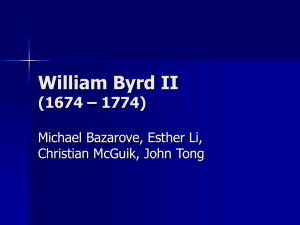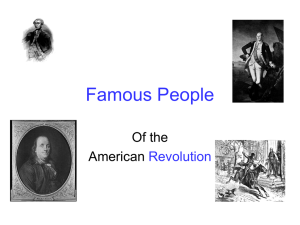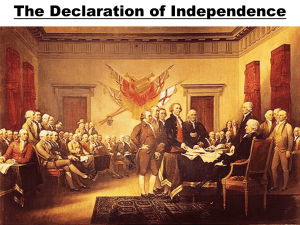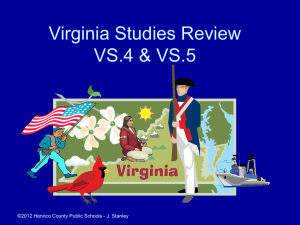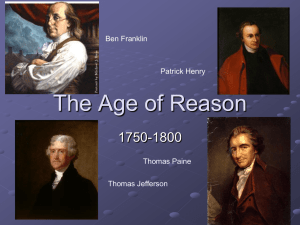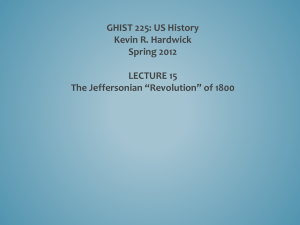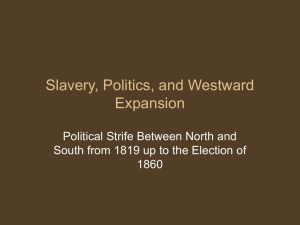Investigating John Brown`s Raid
advertisement
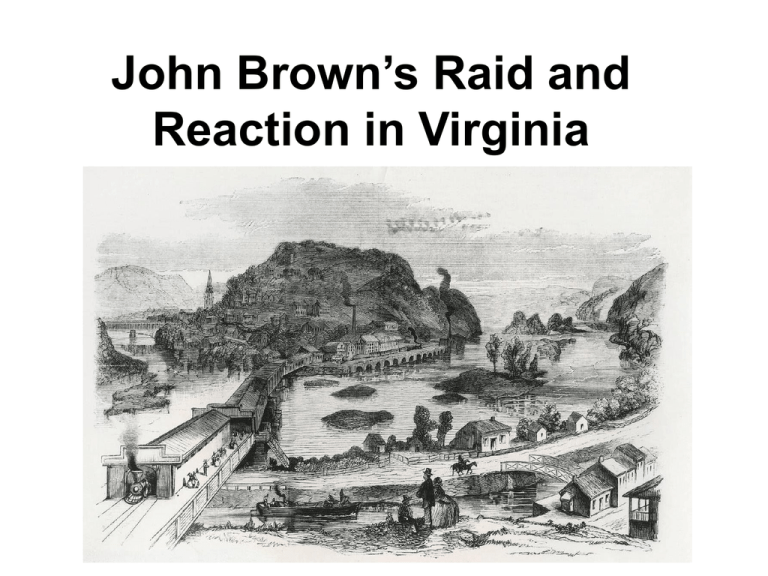
John Brown’s Raid and Reaction in Virginia • Who was John Brown? • What happened at Harpers Ferry? • What were some of the reactions to the raid at Harpers Ferry? David Hunter Strother, John Brown, Pierre Morand Memorial, Special Collections, Library of Virginia. “Harper’s Ferry—The Scene Of The Late Insurrections,” Harper’s Weekly, October 29, 1859, Photographic Collection, Library of Virginia, Richmond, Virginia. Porte Crayon, “The School-House in the Mountains, Used by Brown as an Arsenal,” Harper’s Weekly, November 12, 1859. Photographic Collection, Library of Virginia, Richmond, Virginia. “U. S. Marines Storming Engine House at Harper’s Ferry,” Frank Leslie’s Weekly, October 29, 1859. Photographic Collection, Library of Virginia, Richmond, Virginia. John Brown, his son, and another of the Outlaws awaiting examination,” Harper’s Weekly, November 5, 1859. Photographic Collection, Library of Virginia, Richmond, Virginia “John Brown’s Raid: The Guard-room, with Wounded Prisoners in same,” Harper’s Weekly, November 5, 1859. Photographic Collection, Library of Virginia, Richmond, Virginia. Porte Crayon, “The arraignment of John Brown and the other prisoners before Judge Parker,” Harper’s Weekly, November 12, 1859. Photographic Collection, Library of Virginia, Richmond, Virginia. Norfolk and Portsmouth Herald November 22, 1859 . . . it does not require the stimulus of false rumors and imaginary fears to convince us of the strict propriety of the measures taken by Governor Wise to defeat the naturally-to-be expected efforts of the Abolitionists to rescue from the gallows the hoary traitor, murderer and insurrectionist, John Brown. Norfolk and Portsmouth Herald November 26, 1859 . . . “he avowed himself an abolitionist, and asserted that there were many in Norfolk and Portsmouth, but that they were afraid to say so; but he was free, white, and twenty one, and had no hesitation in declaring that if he had five hundred or five thousand dollars he would give one half of it for the release or rescue of John Brown.” The by-standers, were highly indignant at such language, and immediately had information of it lodged with [the Justice of the Peace] who thereupon issued his warrant for the apprehension of Fletcher. “You are very Eloquent in denouncing old Brown, as a Vile traitor Because he wished to free the Poor Black Slaves; But how different you are in speaking of George Washington; the Chief of the White Rebels.” “If Mr. Brown commited an error it was an error of the head—not of the heart. But Sir, "Too err is human. to forgive divine." You have it in your power to prove you can be magnanamous to a noble foe. do it—and the blessings of millions shall be yours—Fail to do it—and you shall have touched a chord that shall not cease to vibrate till ‘The bonds of the oppressor shall be broken and the oppressed go free.’” "Treason" Broadside, 1859 November 4. Virginia Governor (1856–1859: Wise). Executive Papers of Governor Henry A. Wise, 1856–1859. Accession 36710. State Government Records Collection, Library of Virginia. "Anti-Slavery Mass Meeting" Broadside, 1859 December 8. Virginia Governor (1856–1859: Wise). Executive Papers of Governor Henry A. Wise, 1856–1859. Accession 36710. State Government Records Collection, The Library of Virginia, Richmond, Va. Think About It • What do these primary sources reveal about reactions to John Brown's Raid? • How did the authors of these sources view Brown? • What bias is evident in the sources? What terms or phrases reveal this? Newspapers • What does the article from the Norfolk and Portsmouth Herald on November 26, 1859, reveal about the limits of free speech during controversial times? • At what other times in American history have we seen similar crackdowns? Letters • What is significant about the letters from Anonymous and “Brutus”? • What rhetoric did these writers use in their letters? Mahala Doyle Mitchell's Sectional Map of Kansas, 1859. Library of Congress Geography and Map Division. http://hdl.loc.gov/loc.gmd/g4200.ct001346 • Moved to Kansas in 1855 with her husband and five children. • Her husband was pro-slavery. • On a night in May 1856, John Brown and a company of men took her husband and two eldest sons out of their house and murdered them. • Brown was not arrested for the murders. Interpret John Brown’s actions at Harpers Ferry. Examine his legacy. Should he have been put to death for his crime?

